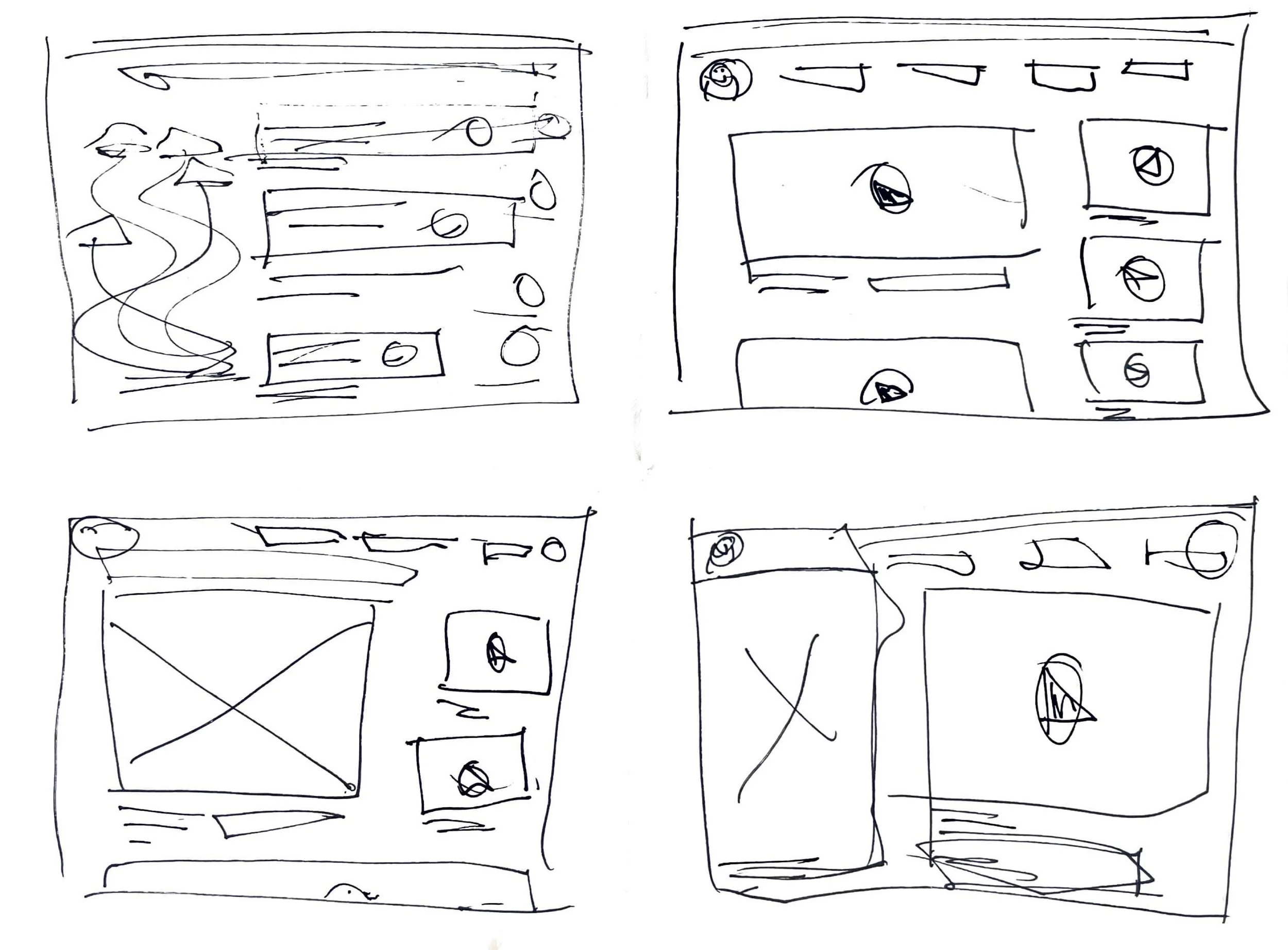A thoughtful resource for psychedelic
harm reduction & integration.
Client
M.A.P.S.
Duration
4-Week Design Sprint
My Roles
UX Researcher, UX/UI Designer
Overview
Psychedelics are becoming more mainstream as institutions such as Johns Hopkins Center for Psychedelic and Consciousness Research, M.A.P.S., and Imperial College have shown these substances have great benefits in treating drug addictions, depression, PTSD, anorexia, and Alzheimer’s disease.
Decriminalized efforts have already caused a change in legislation in various parts of the country.
As with taking any mind-altering substance, there are risks involved.
Preparation and education are two components that are crucial to harm reduction prior to the psychedelic experience.
Psychedelic integration refers to taking the gained insights, emotions, or attitudes from your experience, and processing them into desired areas of your life.
The Problem
Psychedelic experiences can be hard to process and information about harm reduction and integration is often found in the form of complex academic frameworks or online forums that are both difficult to sift through and understand.
In order to bring harm reduction through education and preparation to the layperson along with integration techniques there needs to be a resource that is easy to use and understand.
How Might We…
The weight of this topic was heavy at times.
I dove deep into peer-reviewed journals, psychological integration frameworks, and harm reduction best practices.
The HWM method set the stage for an empathetic approach to my design process and helped me organize my thoughts and target the simplest design needs.
Pick a target
I picked a target with my HMW’s that I thought addressed the preparation process before the psychedelic experience and the integration process after. This needed to be a holistic and self-empowering experience that did not direct users outside of the site but rather cultivated their embodiment within the site experience.
Discovery & User Research
Methodology
User Survey
To find survey participants for this controversial topic I needed to find people who were willing to admit (anonymously ) that they took an illegal substance. This proved difficult at first so I started joining online integration circles, psychedelic society forums, Facebook groups specific to the topic, and Reddit.
This survey had 30 respondents.
37% of survey respondents sought the help of a therapist, psychologist, or counselor after a psychedelic experience to help with the integration process.
47% of survey respondents are still integrating their psychedelic experience(s).
Over half of respondents indicated that they were a changed person for the better after their psychedelic experience.
User Interviews
I interviewed 5 survey respondents.
I wanted to understand their respective integration process (if any) and what harm reduction measures were taken prior to or during the psychedelic experience. Below are a few sound bites from those interviews.
“I have a difficult time remembering the connections I made during my psychedelic experience.”
Amanda - 33
“Better preparation would have made my psychedelic experience more profound.”
Kenneth - 32
Student
“I usually keep an integration journal to set an intention before my journey and to write about the experience afterward ”
Benjamin - 47
Student
Attorney
Affinity Mapping
Key Groupings
I reduced all of my data from the surveys and interviews into three groups.
Harm Reduction, Integration, and Community. These three themes would later inform my personas and user stories.
Harm Reduction
Integration
Guide / Community
I wanted to see how users grouped the themes I was researching so I performed an open card sort. What emerged were two major groupings. The first group was all about support, community, and safety. The second group was about personal empowerment through integration.
Open Card Sort
Understanding the competitive marketplace allowed me to see what integration frameworks are working and how these three companies are approaching the topic so differently.
It became apparent that no company provided a holistic experience in terms of combining integration and harm reduction.
The Third Wave came close but sent users to external sources for integration services.
Competitive Analysis
Mind Leap
Mobile app
Inactive integration coaches
Not a lot of harm reduction education
No information about the substances
The Third Wave
Great repository of psychedelic substances
Great research information
Directory of integration coaches but sent to third-party websites
Mindbloom
Ketamine specific
Not a lot of reviews
Has Drs. on staff
Great integration program
Beautiful design
Persona Development
High Priority User Stories
“As a user, I want to a book session with an integration coach, so that I can embody my psychedelic experience.”
PRIORITY #1
“As a user, I want to purchase an integration kit, so that I can have some tools to integrate my experience on my own.”
PRIORITY #2
“As a user, I want to learn more about what to expect from a psychedelic substance so that I can be better prepared for the experience.”
PRIORITY #3
How to display the psychedelic substances as an educational resource with extensive information.
Crazy 8’s
Elevated Consciousness
I am a visual and tactile learner. I needed to get my hands to work by building a paper prototype to validate my user stories. This would prove my mental model and serve as a template moving forward.
User Flows
My user flows aim to create a simple understandable site that gives small palatable pieces of information in the userspace.
I wanted the user to easily understand what path they are on at any given time whether that be learning more about substances or perusing integration coaches.
I also invented something I call integration kits. These are meant to serve as a self-empowerment modality that can work in conjunction with or independent from the integration coaching sessions.
“As a user, I want to a book session with an integration coach, so that I can embody my psychedelic experience.”
“As a user, I want to learn more about what to expect from a psychedelic substance so that I can be better prepared for the experience.”
“As a user, I want to purchase an integration kit, so that I can have some tools to integrate my experience on my own.”
Wireframes
User Flow #1 [First Iteration]
User Flow #2 [First Iteration]
User Flow #1 [Second Iteration]
User Flow #2 [Second Iteration]
Usability Testing
Unmoderated Usability Testing with Maze
I created an unmoderated usability test in Maze and got feedback from 12 participants.
100% of participants were easily able to perform the task, “Learn more about psilocybin.
90% of participants felt the task “Read the bio of an integration coach and book a consultation” was straightforward.
100% of participants felt the task, “Add the embody integration kit to your cart and checkout” was simple and matched their mental model of a checkout experience.
User feedback led me to make a few changes.
There was trouble understanding the scroll mechanics of the coach gallery so I added an arrow icon to prompt users to scroll.
Users wanted feedback that their consultation was booked so I added the feedback.
The same feedback was requested after checkout so I added another confirmation that the order was received.
Style Guide
Design a website that connects integration coaches to people in need of their services and reduces harm by providing easy-to-understand educational resources about psychedelic substances and their typical effects.
MVP
What I learned
I used paper prototyping as a tool to help me visualize the desktop real estate and flow of each user story.
The usability test made me aware of how important confirmation feedback is. I thought it would be implied in many ways but that added step just seemed to put the users at ease.
The design process brought a sense of stability and simplified an expansive topic. I leaned on sketching quite a bit to validate ideas quickly and organize my thoughts.











































